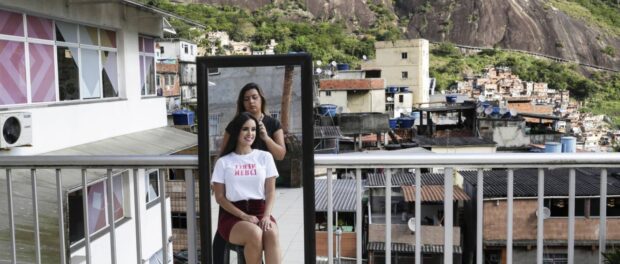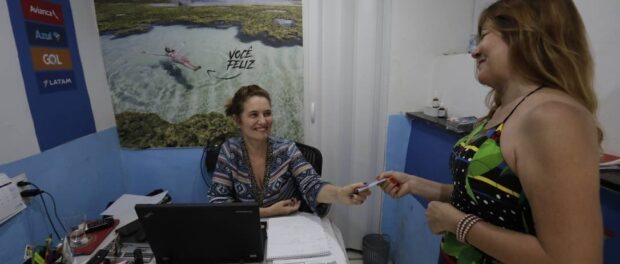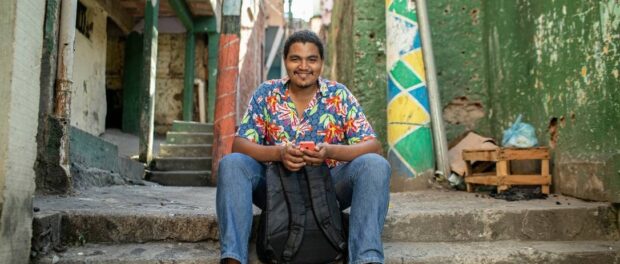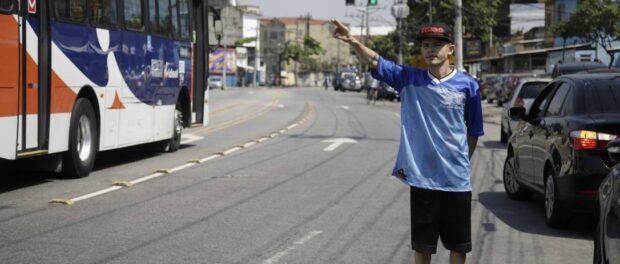
For the original article in Portuguese by Ludmilla de Lima published in O Globo click here.
Calling a ride with an app after grabbing a draft beer with friends, receiving a pizza at home, or buying clothes through the Internet are easy things to do, but for those who live in Rio’s favelas, nothing is that easy. A new study that collected [consumption] habits in eight Rio de Janeiro favelas shows, behind the numbers, the barriers that need to be overcome every day by those living in these areas. Businesses’ resistance to entering favelas and the actions of militia members and drug traffickers, keeps a portion of the population of the city a few steps behind when it comes to digital consumption.
The study, by the recently created DataANF Institute, of the Favelas News Agency (Agência de Notícias das Favelas, ANF), founded 18 years ago by journalist André Fernandes, reveals difficulties, but also dreams: when asked open-ended questions about what they’d like to consume, 21.8% said they’d like to travel, coming out above having one’s own house (15.5%), a car or motorcycle (12.9%), and a healthcare plan (12.1%). Another highlight regarded aesthetics: the quantity of beauty products and services purchased exceeds that of food.
“We found the [average] favela resident hungry for digital consumption, willing to adhere intensely to apps, but still hesitant because of companies’ and professionals’ resistance to delivering products in favelas,” says sociologist Carmen Valdez, who coordinated the study.
Residents are left to circumvent these obstacles. Between September 2 and 10, researchers interviewed 409 people in the favelas of City of God, Mangueira, Manguinhos, Santa Marta, Rocinha, Salgueiro, São Carlos, and Vila Kennedy. They heard many stories, one of them from a group in the neighborhood of Estácio that came together to order food via apps and take turns picking up their deliveries at the foot of the hill. Except that drug traffickers started charging fees.
“There are attempts to address what the market does not, but often this organization has to adhere to the mandates and limits imposed by the parallel power [of drug traffickers and militias],” says Valdez.
An App to Call One’s Own
While the study points to a 46.6% adherence to transport services such as Uber, this is only possible because many residents sweat to break drivers’ resistance [to serving the favelas]. A tour guide in Providência, in central Rio, 30-year-old Cosme Felippsen now uses an app (called Porto Driver) created to attend to the area’s hills.
“It’s an initiative by residents, owing to the high demand for Uber, 99 [taxi app]… On these apps, we have to insist a lot [to get them to serve us]. When I’m in Lapa with my friends, I call an Uber with my heart in my hands,” says Felippsen. “In the favela, even with money, we can’t get access to basic services.”
Journalism student Tarcisio Lima Salazar, 24, lives in the favela of CHP-2, in Manguinhos, and is all too familiar with this.
“Here, nothing arrives, not even bills, which go to the residents’ association,” comments Salazar, who likes to buy clothing and hats on the Internet from a rap brand in São Paulo, but always has to pick up his orders (after tracking them) at one or another Post Office distribution center.
The study, which has a 95% confidence interval and a 3% margin of error, found that 57.1% of those interviewed only make purchases at brick and mortar stores. However, 65.6% have at some point made a purchase on the Internet. There is a lack of more careful consideration on the part of businesses despite plenty of willingness to open wallets, especially when it comes to beauty products.
Makeup artist Gabriella Mesquita, 26, says so. In 2018, she began taking clients in her home in Rocinha. The business went so well that she commissioned a project to design her own studio there. The economic crisis? It didn’t come to her door, despite strong competition. Mesquita estimates that there are around 30 salons in the lower part of Via Apia alone, the commercial hub of the neighborhood: “Sometimes, women cut back on clothes or grocery shopping to invest in themselves.”

Residents also don’t see an issue in saving up to fly. In Santa Marta, Salete Martins, who works as a tour guide in the favela, has been saving money to visit the Lençóis Maranhenses and, further down the road, she dreams of visiting France.
“I want to take a picture with the Eiffel Tower… I’m studying French,” she says. She began to expand her horizons ten years ago. “I do everything here at the agency in the favela (called Vai Voando). I buy [the trip] through installments, and when the trip comes, I’ve already paid.”


